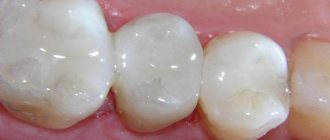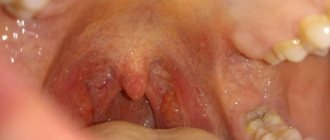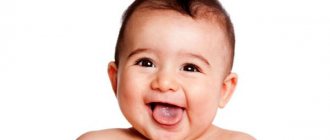Green poop in a baby can be the result of various reasons, including those that do not harm his health. However, when green stool appears, it is important to pay attention to factors such as stool consistency, frequency of bowel movements, odor, and the presence of impurities.
If you have any doubts about the child’s well-being, you should urgently seek advice from a specialist, since this symptom may also mean the presence of pathology in the child’s body.
What kind of stool should a baby have?
The baby's stool should be yellow.
The norm is that the baby's stool is yellow in color, has a mushy consistency and a sour odor.
This usually happens in children who are bottle-fed and who regularly receive food of a stable composition.
A breastfed baby's stool may vary in color, smell, and consistency. The reason for this is the composition of breast milk, which can change under the influence of many factors:
- mother's diet;
- her psycho-emotional state
- lactation period
The baby's first stool after birth is black with greenish streaks, it is very thick and tight. This stool (meconium) is normal and should not be a cause for concern.
These are epithelial cells, mucus and amniotic fluid accumulated in the intestines of a newborn. With proper development and breastfeeding of the baby, after a few days the stool becomes liquid and turns green.
During the first two months of life, the baby can have bowel movements from three to twelve times a day, ideally after each feeding. Also, stool during this period can be an indicator of proper lactation. If the baby has not had a bowel movement for 24 hours, this may indicate that he is not receiving enough milk.
Constipation from vitamin D3
Sometimes mothers notice constipation in their babies when they start giving them vitamin D3 for prevention. This is more a coincidence than a consequence of taking the vitamin, since taking it in the prophylactic dose prescribed by the pediatrician does not cause such an effect. But an overdose of vitamin D3 can cause constipation. The fact is that vitamin D3 promotes the absorption of calcium in the intestines. In turn, excess calcium in the intestinal contents leads to the formation of difficult-to-digest compounds that thicken the stool. Do not violate the recommended dosage. With vitamins, as with other medications, more is not better.
Causes of green poop in babies
During the period when teeth are being cut, there may be greenness in the stool.
Green poop in a baby can be considered normal. If your baby drinks only breast milk, the following factors can affect the greenness of the stool:
- The child’s body, in this way, gets rid of bilirubin;
- after being exposed to open air, feces oxidize;
- there are hormones in the stool that reach the baby through breast milk;
- green poop appears with the development of viral infections;
- the appearance of green poop at the age of 1 month indicates that the child’s body has not yet developed enough beneficial bacteria;
- the development of dysbacteriosis is accompanied by a pungent putrefactive odor.
- the child feeds only on liquid front milk, and cannot reach the hind (fat) milk, which gives color to the stool;
- During the period when teeth are being cut, intestinal dysfunction occurs, which can cause green stools for a short time.
The child began to be fed foods with which his intestines were not yet familiar. For some time, until adaptation has passed, how can it be green. Typically, the color of stool depends on what the baby eats along with breast milk. Green poop may appear due to:
- Mom ate little milk and a lot of greens (broccoli, dill, parsley, lettuce);
- Mom ate a lot of carbohydrates;
- the mother suffers from food poisoning, toxins that enter the child’s body through breast milk affect the color of the stool;
Green stool in formula-fed babies can occur if the baby is given a formula containing iron. The formula needs to be replaced and everything should be back to normal soon. Very often, baby poop turns green for no specific reason. If your baby is active and there are no other signs of pain, then there is no need to worry.
Thematic video will tell you about the baby’s stool:
Psychosomatics for constipation
If the child is only a month old, he will not experience constipation of psychosomatic origin. The central and autonomic nervous systems must mature to fully regulate intestinal function. Psychosomatics as the cause of constipation can be assumed in a child aged a year and a half or older, that is, at the time when he begins to be potty trained. Constipation for psychosomatic reasons can occur if:
- the baby has already experienced pain during bowel movements and is afraid of its repetition, so he holds back stool;
- parents force the child to sit on the potty, but this is unpleasant and scary for him;
- parents scold or punish the child for dirty and wet pants;
- there is an unfavorable emotional situation in the family, poor relationships between parents, a negative attitude towards the child;
- the child went to kindergarten or changed children's group. Constipation can be caused both by stress and by the fact that the baby is embarrassed to go to the potty in the presence of other children and other adults (teachers, nannies).
Almost all children experience constipation. For some these are isolated cases, for others they are regular. Parents should know what can cause constipation and how to deal with it.
So
- To help a child with constipation, first of all, sufficient fluid intake will help: in the form of an additional portion of water, both before and during the period of introducing complementary foods. You cannot use medications, enemas, or folk remedies without a doctor’s prescription.
- To prevent and treat constipation, it is worth mastering tummy massage techniques: circular, counter strokes and stroking the lateral sections of the abdomen.
- Constipation in a mother can cause the same digestive problems in a breastfed baby.
- Rotavirus infection can also cause constipation in a child.
- The period of increased risk of constipation is the introduction of complementary foods.
- During teething, constipation can be caused by poor appetite and loss of moisture due to increased body temperature.
- Prophylactic doses of vitamin D3 do not cause constipation, unlike an overdose.
- Psychosomatics as a cause of constipation begins to play a role when the child reaches the age of potty training, that is, from a year and a half and older.
(0 ratings; article rating 0)
Share Share Share
Green stool in a child after one year
Allergies provoke green stools.
Green stool in a child, no matter what age, should always have a logical explanation for its origin.
If in the first months of life he speaks of disturbances in the digestive system, then in children after 1 year of age he speaks of the presence of infections. Other factors that can cause green stools:
- congenital pathologies of the digestive tract;
- development of infections;
- disruption of the immune or endocrine system;
- staphylococcal infection
- presence of intestinal parasites;
- taking certain medications
- allergy.
In any case, if the color of the stool changes, you need to be examined by a doctor and take tests to diagnose the disease and prescribe surgical treatment.
How to help your baby
All therapeutic procedures must be prescribed by a doctor. Self-treatment is dangerous for the health of the baby. Those recipes offered by traditional healers may not be suitable for a newborn baby. Pharmaceutical preparations for children are available in the form of pleasant-tasting syrups. Kids don't refuse them. By turning to pediatric dentistry, parents can be confident in the success of the therapy. When the symptoms of the disease begin to subside, you should not stop taking the medications. This is done with the doctor's permission.
Natural laxatives include fruit purees made from fresh apples or apricots. They are baked in the oven, peeled from the rough crust, and ground. This supplement is usually allowed to be introduced into the diet in small portions from 4.5 months. If the intestines “like” complementary foods, the dose is gradually increased. The pediatrician may prescribe mild sedatives. After all, the nervous system takes an active part in the formation of units.
The mother of the baby should also follow the diet. She can eat dried apricots, prunes, and limit starchy dishes from rice, pasta, and potatoes. Flour products should be consumed with stewed vegetables. After all, everything that a mother eats enters the newborn’s body with her milk. For children in this condition, play activities in the form of moving their legs, arms, and lightly stroking their tummy are useful. When artificial feeding, you need to replace wheat and rice mixtures with buckwheat or oatmeal. A special teether with rough spikes will calm the nervous system, which reduces itching of the gums.
What does green diarrhea mean?
Dysbacteriosis is the cause of diarrhea.
If an infant has loose green stools for several days, and the baby is lethargic and restless, then this may be diarrhea, which has developed due to the following reasons:
- Intestinal infection. Occurs under the influence of E. coli, various microbes, dysentery, paratyphoid microorganisms. The first sign is a high temperature. The baby behaves restlessly, often burps, refuses food, and loose stools appear.
- Dysbacteriosis. The most common diagnosis is the gastrointestinal tract. This develops as a result of a disturbance in the composition of the microflora, which leads to malfunctions of the digestive system. In addition to green diarrhea, the child experiences bloating, colic, and skin rashes. The specialist prescribes various types of lactic bacteria and yeast.
- Viral infection. Due to the fact that the child’s immune system is not yet developed, it depends on the state of the intestinal microflora. Therefore, green diarrhea can develop from a viral infection, or even from a simple cold.
- Allergy. Mothers can be triggered by diet, changing formula, or medications. Also, when antibiotics are prescribed, diarrhea is inevitable in most cases.
Teething symptoms
The body reacts to the appearance of chewing organs with discomfort and pain.
- The baby cries, is capricious, puts everything in his mouth because his gums itch.
- Profuse salivation appears. This can provoke coughing, even with vomiting.
- Inflammation of the gums in a child is diagnosed.
- Often there is a symptom such as an allergy. Redness is visible in the area of the cheeks and chin.
- Children's temperature rises and their tummy becomes hard.
- The functioning of the gastrointestinal tract is disrupted. This manifests itself in the form of flatulence, diarrhea or irregular bowel movements. The child is constantly pushing.
- The body's defenses are reduced.
The same symptoms have different causes. Therefore, you should not make a diagnosis yourself. When warning signs are noticed, it is better to seek the services of a qualified doctor. Parents should not ignore discomfort in the tummy, excessive straining during bowel movements, regular colic, and the appearance of dense feces in the form of separate fragments.









